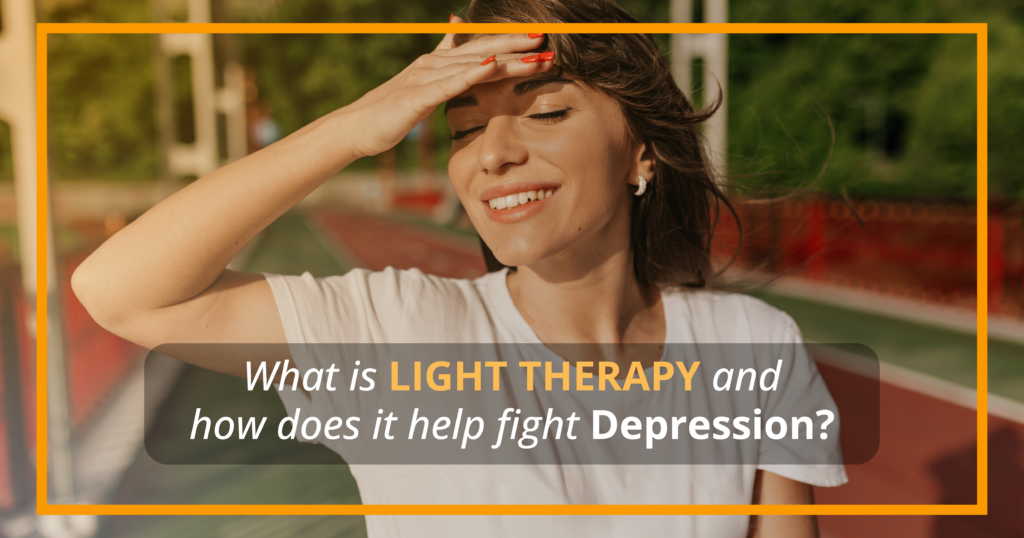
What is Light Therapy and how does it help fight depression?
SEASONAL AFFECTIVE DISORDER (SAD)
SAD- also called Seasonal Depression is classified by bouts of depressive episodes, during seasonal changes, especially having the winter season as their trigger. This is because, in the winter season, the exposure to sunlight is very little, thus disturbing the circadian rhythm of the human body, causing mood swings, hormonal imbalances and in worst cases, depression. The risk of SAD is more for people who already have other mental health SAD is also characterized by its re-emergence every year, making it a priority to treat the disorder to reduce its symptoms.
According to the National Institute of Mental Health, an estimated 10 million Americans suffer from Seasonal Affective Disorder (SAD). Approximately 5% of the U.S. population experiences SAD in any given year, and an additional 10-20% may experience a milder form of the disorder. Compared to men, women are four times more likely to get affected by SAD. SAD is most common in people between the ages of 18 and 30, but it can affect people of any age.
HOW DOES LIGHT THERAPY HELP TREAT SAD?
Light therapy is a type of therapeutic method which is primarily used to treat issues like SAD (Seasonal Affective Disorder) and disturbances in the 24-hour Circadian Rhythm of our human body- which is also called the internal biological clock of our body, controlling our sleep-wake cycle and hormone production.
Light therapy involves exposing a person to a natural or artificial light source for a prescribed amount of time. If it is by natural means, i.e., by sunlight, Vitamin D is also produced in the human body if there is exposure to the early morning sunlight. An artificial source of light is used, such as the light box emitting a certain luminous intensity (about 10,000 lux) of light. Patients opting for this therapy should sit in front of this lightbox and can carry out their day-to-day activities like household chores, office work, watching TV or even workout. Also, care should be taken to avoid direct exposure to the bright intensity light in our eyes, as this may cause problems related to eyesight.
Comparison of Efficiency of Therapy and Time of Treatment
Source: https://carex.com/blogs/resources/does-light-therapy-work
Light therapy is usually favored as a treatment method over prescribed antidepressants as it does not have any side effects. Administered medicines generally take 2-3 weeks for the results to be seen. Light therapy usually takes 1 week to start showing results if the patient is responding well to the treatment. This kind of treatment is easy and cost-effective- usually requiring natural light or a lightbox. Both the methods of light therapy- light simulation during dawn and bright light are seen to produce the same kind of results. Light therapy is also combined with antidepressant drugs and psychotherapy to increase the efficacy of the treatment.
TREATMENT OF NON-SEASONAL DEPRESSIONS USING LIGHT THERAPY
A recent analysis conducted by Cochrane Collaboration, a British Charitable Organisation has found that light therapy can be useful for treating non-seasonal depression as it has shown to be a treatment method with modest but promising results.
The classification of non-seasonal depression also includes major depressive disorders and postpartum depression. It is also used to treat disorders of the circadian rhythm- DSPD (Delayed Sleep Phase Disorder) and even Shift Work Disorder. By timing the exposure to bright light, the 24-hour sleep-wake cycle is tweaked and rectified. Results are also seen when bright lights are switched on a few minutes before the person usually wakes up (dawn simulation). Advanced Sleep Phase Disorder- which is characterized by sleepiness in the early evenings and awakening in the early morning is treated using Evening Light Therapy.
RISK FACTORS ASSOCIATED WITH LIGHT THERAPY
Even though there are numerous benefits associated with light therapy, its risk factor cannot be ignored. Light therapy might cause headaches, eye pain and skin irritation. Moreover, people with existing medical conditions should be very cautious while using light therapy and should always consult a doctor before practicing the same. Also, this kind of therapy must be avoided for people who have light sensitivity.
EXPECTED MARKET GROWTH FOR LIGHT THERAPY
Apart from this, the market for light therapy seems to be very prospective. It is expected to grow at a growth rate of 8.2% from 2020 to 2027, hence reaching a value of $1.7 billion by 2027. This growth is driven by increasing awareness of the benefits of light therapy, technological advancements, and the growing prevalence of mental health disorders. Additionally, the increasing demand for home-based light therapy devices is expected to further drive market growth.
Source:https://www.researchandmarkets.com/reports/5030139/light-therapy-global-strategic-business-report